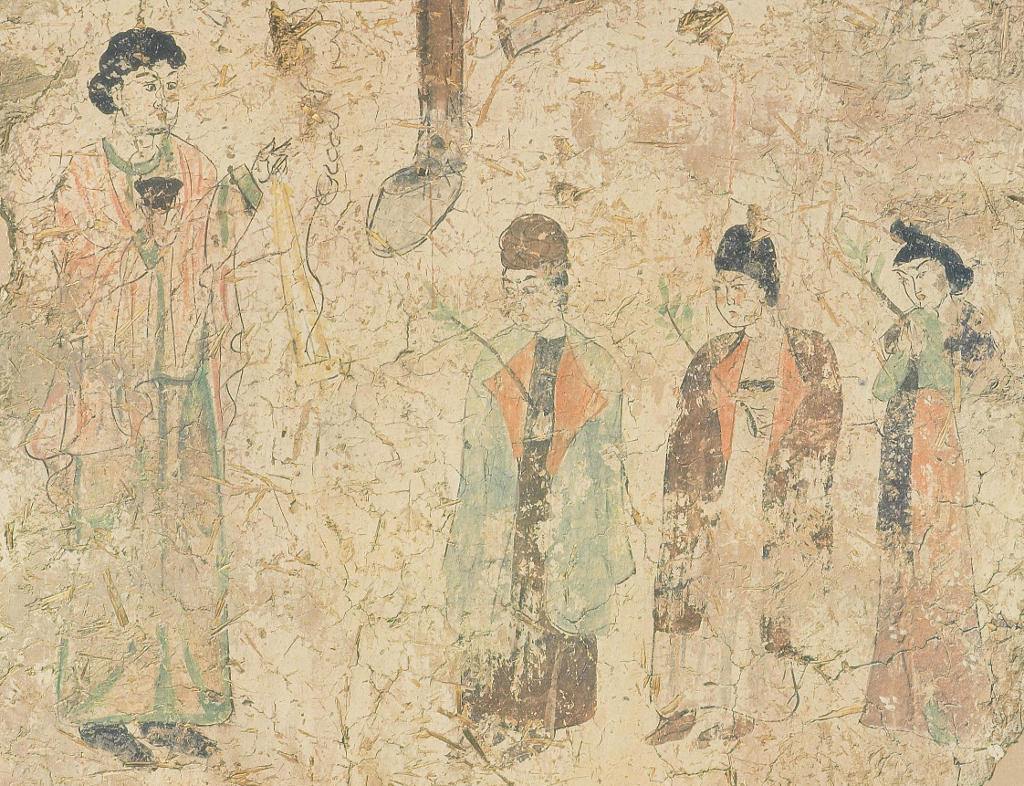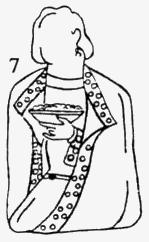Wall Paintings from a Christian Temple, Chotscho, Tarim Basin
 A large image of this Wall Painting from a Christian Temple, Chotscho, Tarim Basin Picture source: Chotscho by Albert von Le Coq Plate 7 Khocho, Nestorian Temple. 14C date: 683-770 CE. Wall painting. 61 x 67 cm. |
 Compare this to the
Compare this to the 